The Rise of Mass Media
As photography penetrated every aspect of American culture, the pictorial press began to dominate the newspaper industry. The two best-selling newspapers of the time—Frank Leslie’s Illustrated Newspaper (from 1855) and Harper’s Weekly (from 1857)—were both dominated by news illustrations. Photography had helped to create the market for the pictorial press by increasing public demand for pictures. Until the late 1880s, however, the images in newspapers and magazines were not photographs, but meticulously carved wood engravings.
Fifty years into the age of photography, the best-selling and most technically-advanced newspapers in the world still employed dozens of sketch-artists and hundreds of wood engravers, who would carve lines in wooden blocks to create a design in relief.
Developing a technique of printing photographs with a printing press was a daunting challenge. As early as 1852, Fox Talbot had experienced limited success, and others made advances in the 1860s and 1870s. But their processes were too cumbersome or too expensive for mass production.
Frederic E. Ives at Cornell University made the crucial breakthrough. Ives patented his first “halftone” process in 1881 and developed other, improved processes throughout the 1880s. All of them involved rendering a photograph as tiny black dots, so the printing press could print it. The human eye, with its limited resolving power, would perceive the closely-spaced dots as continuous tones.
With Ives’s halftone process, and later developments by Louis and Max Levy, photographs rendered as dots finally superseded woodcuts in book and periodical illustration, and they remain the dominant form of printed illustration today.
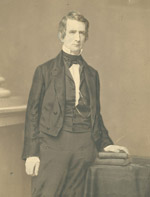 |
Mathew Brady. William H. Seward, ca. 1861. [zoom] Hand-colored salted paper print, 15 ½ x 11 7/8 William Henry Seward (1801-1872) was governor of New York, U.S. senator, and secretary of state under Lincoln and Johnson. The props, style and size of this photograph indicate that it was originally a carte de visite. The carte de visite was photographed to create a copy-negative. This larger photograph on paper was then printed from the negative using a solar enlarger. |
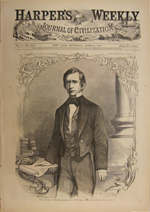 |
Brady’s Photograph Reproduced by Wood Engraving. Harper's Weekly, April 6, 1861. [zoom] The engraver of this Harper’s Weekly cover used Brady’s photograph as a guide, adding background props and improving Seward’s tailoring. Prints made from engraved wood blocks dominated book, magazine, and newspaper illustration for much of the 19th century. The halftone process led to the demise of this labor-intensive trade by the 1890s. |
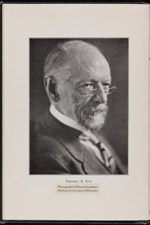 |
Photograph by Elias Goldensky, halftone by Gatchel & Manning, Frederic E. Ives, 1915. Frederic E. Ives. The Autobiography of an Amateur Inventor. Philadelphia, 1928. [zoom] Additional images: 
Frederic Eugene Ives (1856-1937), whose image is reproduced here using the halftone process, introduced the first commercially viable halftone method. He ran the photographic laboratory at Cornell University (1874-1878) where he conducted research that revolutionized the newspaper industry. Ives was also a pioneer of early color photographic processes and anaglyph three-dimensional photography and film. |
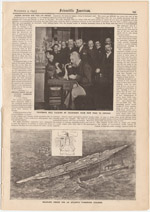 |
Unidentified. Alexander Graham Bell Inaugurating the New York to Chicago Telephone Line, 1892. Scientific American, November 5, 1892. [zoom]
In this halftone reproduction of a photograph, telephone inventor Alexander Graham Bell (1847-1922) inaugurates the first long distance line by calling Chicago from New York. The article notes that the illustration “is interesting historically as showing the advances made in both sciences, telephony and photography.” |
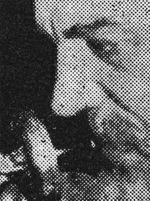 |
Unidentified. Enlargement of Alexander Graham Bell Halftone. [zoom] |